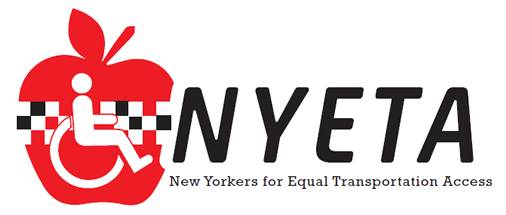PDF Format here: PDF
(February 2, 2017) —Today the NYC Taxi and Limousine Commission voted in favor of fatigue rules that would track and monitor taxi drivers to prevent accidents because of driver fatigue. It did so in the face of an Uber counterattack that claimed the rule was a threat to their passengers’ privacy.
We at NYETA, even though we have some concerns with aspects of the fatigue rules, support the TLC for standing up to Uber’s intransigence—a company knee jerk reaction whenever a municipality tries to enforce rules on a company acting as a public conveyance. In the face of direct threats by a private company named Uber, the administration stood steadfast in its desire to obtain simple and basic info.
Here’s how Manhattan Borough President Gale Brewer explained the simplicity of the rule:
“Here’s the issue: The TLC approved a rule last summer to ensure taxi, livery and car service drivers aren’t on the road for so long at a stretch that they’re too tired to drive safely. But to update that rule and make it more enforceable, the TLC wants data on where and when these vehicles make drop-offs, so they can track how long drivers are behind the wheel.”
Brewer also makes short work of Uber’s self-serving privacy nonsense:
“These are odd criticisms from companies like Uber, whose own privacy controversies include a settlement with Attorney General Eric Schneiderman after the company was investigated for how it collected riders’ personal information and made it available to company executives in a map display called “God view.” But even leaving that aside, the complaints over the proposal TLC is making don’t pass the laugh test.”
It’s about time that the city understands Uber has no concern whatsoever with the public interest. At the same time, we do believe that the TLC rules—that rely on the e-hail companies to submit data—are unfair to taxis, yellow and green, because there is no real way to verify the accuracy of the submitted data. As NYETA spokesperson Brad Gerstman points out:
“Taxis are all connected by computer to the TLC’s monitoring system by a program called T-PEP. In this way, all taxi trips can be accurately gauged. The system also enhances passenger safety because it is easy to identify a misbehaving or abusive driver. If equal treatment and fairness is to be maintained, the very same system needs to be mandated for Uber and its imitators.”
There are now over 60,000 e-hail cars roaming and clogging the city streets-and we have no way of monitoring their trips or their impact on congestion and public safety. Former Transportation Commissioner Sadik-Kahn makes the compelling point:
“In New York City under the leadership of Mayor Michael Bloomberg, the transportation department I led used data from GPS units in each of the city’s 13,000 yellow taxis to evaluate traffic flow after we closed Broadway through Times Square to cars and created acres of pedestrian space atop former roadbed.
The real-life data from 1.1 million taxi trips provided a vivid indicator of the success of the project and showed that overall traffic below 60th St. in Manhattan moved 7% faster in 2013 than in 2008. Big data was critical to the analysis and subsequent decision to bring similar projects to neighborhoods across the city.
Transportation data lays in the most public of domains, and should be regarded with the openness of a library and be available to app-builders, students and planning professionals — not hidden behind a wall of company-determined aggregation.”
Commissioner Sadik-Kahn is right. But we believe the TLC action today is only the beginning; and that the safety of the riding public will not be fully realized until the same T-PEP 24/7 taxi monitoring system exists for the over 60,000 e-hail vehicles that are acting with little or no regard for the good of the public.
E-hails, as public conveyances, must follow the same rules mandated for taxis. Monitoring their traversing of the city streets is a solid first step; and insuring that—just like taxis—they become compliant with wheelchair accessibility rules is another necessary public interest measure that will protect people with disabilities and insure fair industry-wide competition.
PDF Format here: PDF


Recent Comments